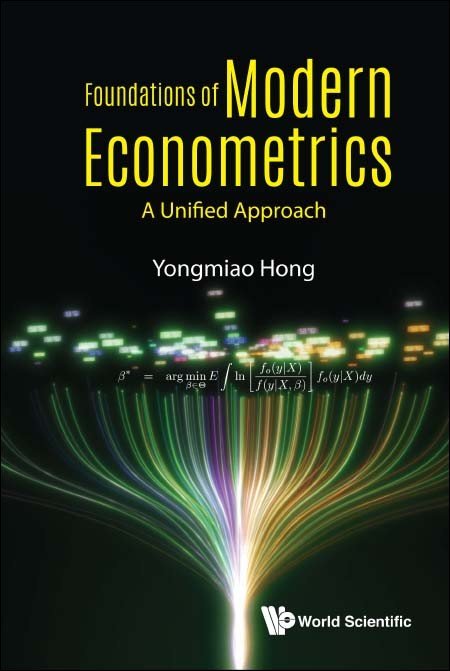Chapter 9: Maximum Likelihood Estimation and Quasi-Maximum Likelihood Estimation
Conditional probability distribution models have been widely used in economics and finance. In this chapter, we introduce two closely related popular methods to estimate conditional distribution models—Maximum Likelihood Estimation (MLE) and Quasi-MLE (QMLE). MLE is a parameter estimator that maximizes the model likelihood function of the random sample when the conditional distribution model is correctly specified, and QMLE is a parameter estimator that maximizes the model likelihood function of the random sample when the conditional distribution model is misspecified. Because the score function is an MDS and the dynamic Information Matrix (IM) equality holds when a conditional distribution model is correctly specified, the asymptotic properties of MLE is analogous to those of the OLS estimator when the regression disturbance is an MDS with conditional homoskedasticity, and we can use the Wald test, LM test and Likelihood Ratio (LR) test for hypothesis testing, where the LR test is analogous to the J · F test statistic. On the other hand, when the conditional distribution model is misspecified, the score function has mean zero, but it may no longer be an MDS and the dynamic IM equality may fail. As a result, the asymptotic properties of QMLE are analogous to those of the OLS estimator when the regression disturbance displays serial correlation and/or conditional heteroskedasticity. Robust Wald tests and LM tests can be constructed for hypothesis testing, but the LR test can no longer be used, for a reason similar to the failure of the F-test statistic when the regression disturbance displays serial correlation and/or conditional heteroskedasticity. We discuss methods to test the MDS property of the score function, and the dynamic IM equality, and correct specification of a conditional distribution model.
- ARMA model
- Censored data
- Conditional probability distribution model
- Discrete choice model
- Duration model
- Dynamic IM test
- GARCH model
- Hessian matrix
- IM equality
- IM test
- Likelihood function
- LM test
- Log-likelihood function
- LR test
- Martingale
- MDS
- MLE
- Probability Density Function (PDF)
- Probability Mass Function (PMF)
- Pseudo likelihood function
- QMLE
- Score function
- Survival analysis
- Truncated data
- Value at Risk (VaR)
- Variation-free parameters
- Vector AutoRegression (VAR)
- Wald test



